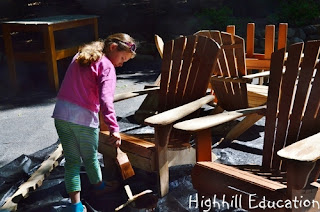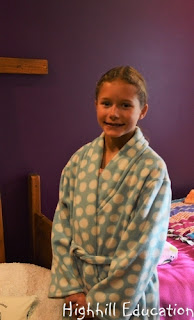Free motion quilting is something like doodling, but instead of paper and pen, you use fabric and a sewing machine. We are very lucky to have access to a high quality sewing machine to learn this craft, but there are many cost effective machines equally capable of being used to create free motion designs. All that's required is for the machine to have the ability to lower the feed dogs.
Feed dogs are the pieces of metal below the needle that move when sewing to suck the fabric through the machine. When the feed dogs are lowered, the seamstress is in control of moving the fabric and can move it in any direction desired.
My daughter has been sewing since she was about 4 years old. She loves it. All my kids were introduced to sewing at a young age, but only two out of the three pursued sewing. Kids are just as capable as adults at mastering free motion quilting and they don't have to have much prior knowledge of sewing. They should be comfortable with a sewing machine, but not an expert. The first key is practice! and the second key is a great resource or teacher!
We love Angela Walters. She is a great internet teacher who began by learning to quilt, progressed to machine quilting for others and now is the author of several books, has created her own quilting rulers and has created an excellent series of video tutorials.
We began learning to free motion quilt when finishing up our 2017-18 school year quilts.
You can see swirls stitched above the basket.
This is one of my daughter's first attempts at free motion quilting. She did this on a traditional sewing machine with the feed dogs lowered. You can see her meanders in the upper right hand corner, and her swirls in the lower left. Above in the middle she tried some work with the rulers.






















